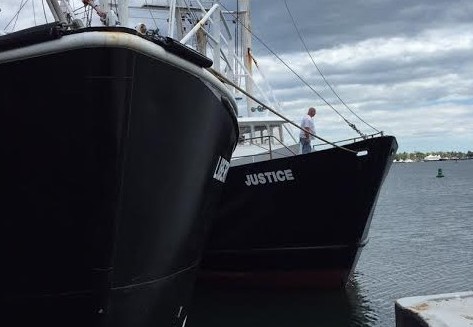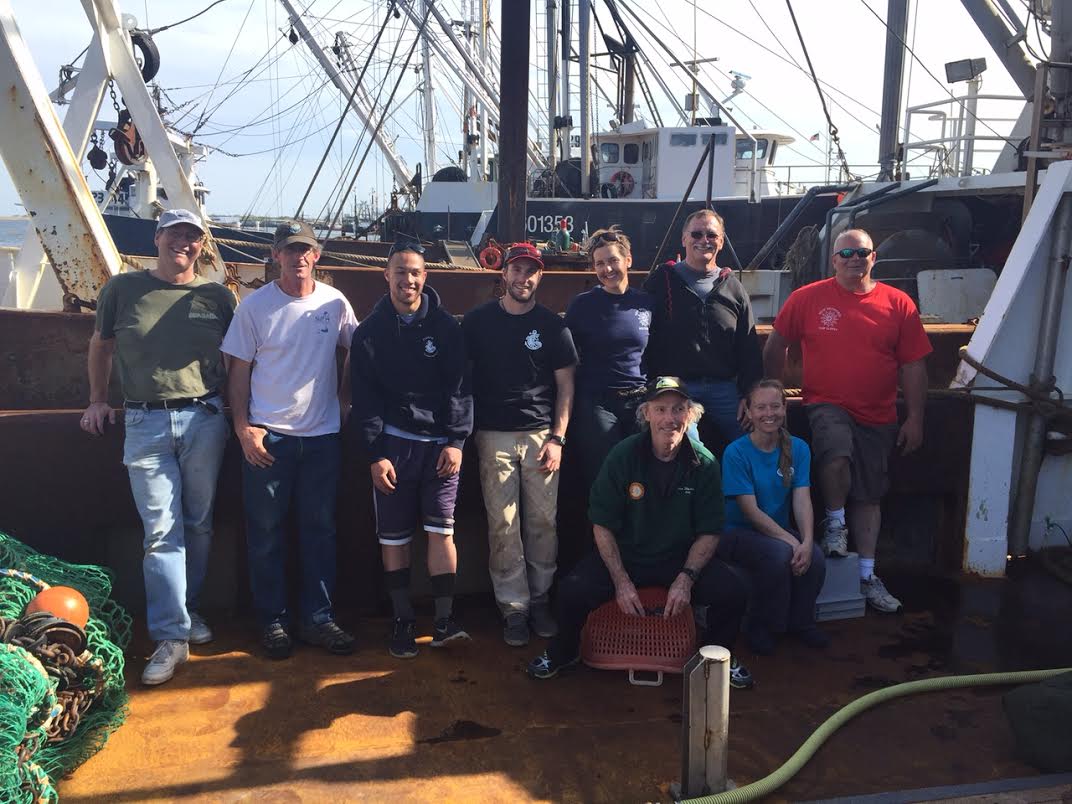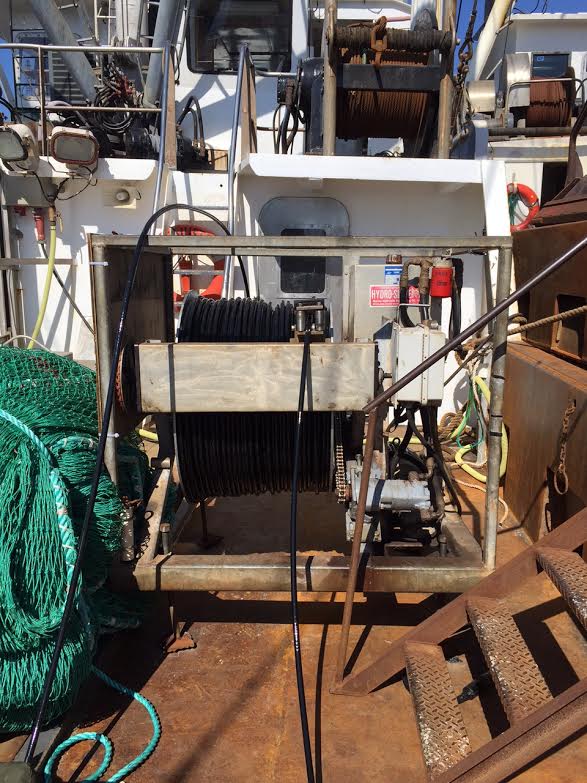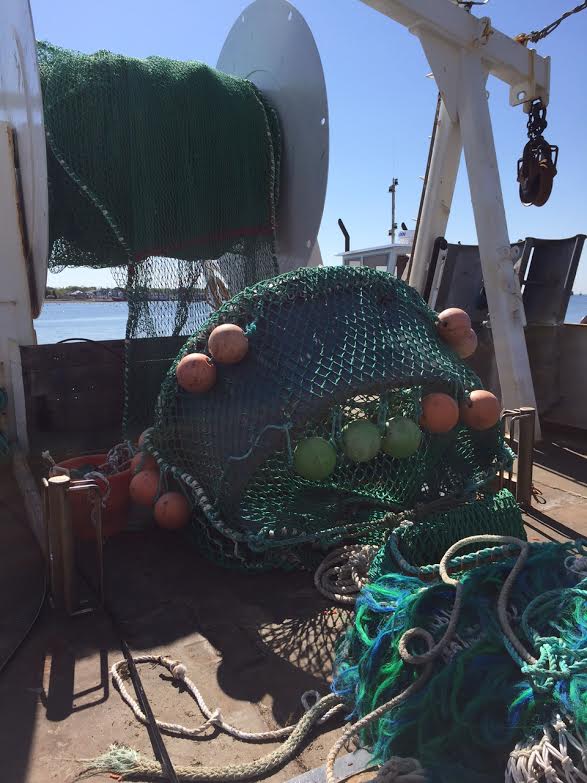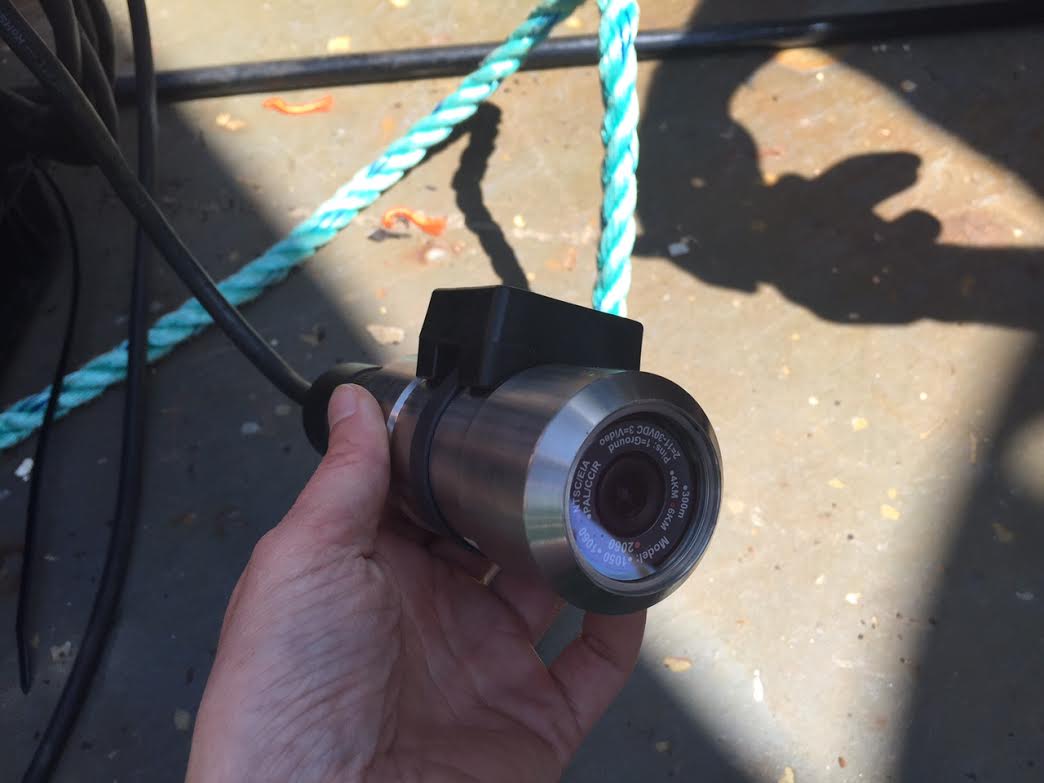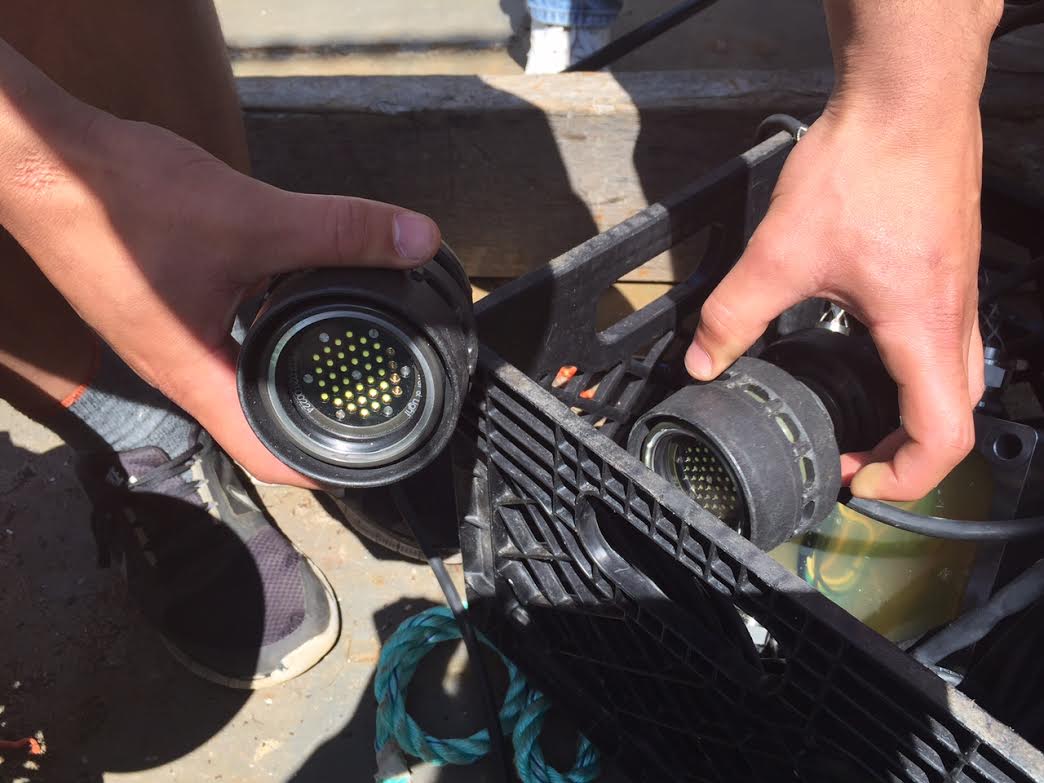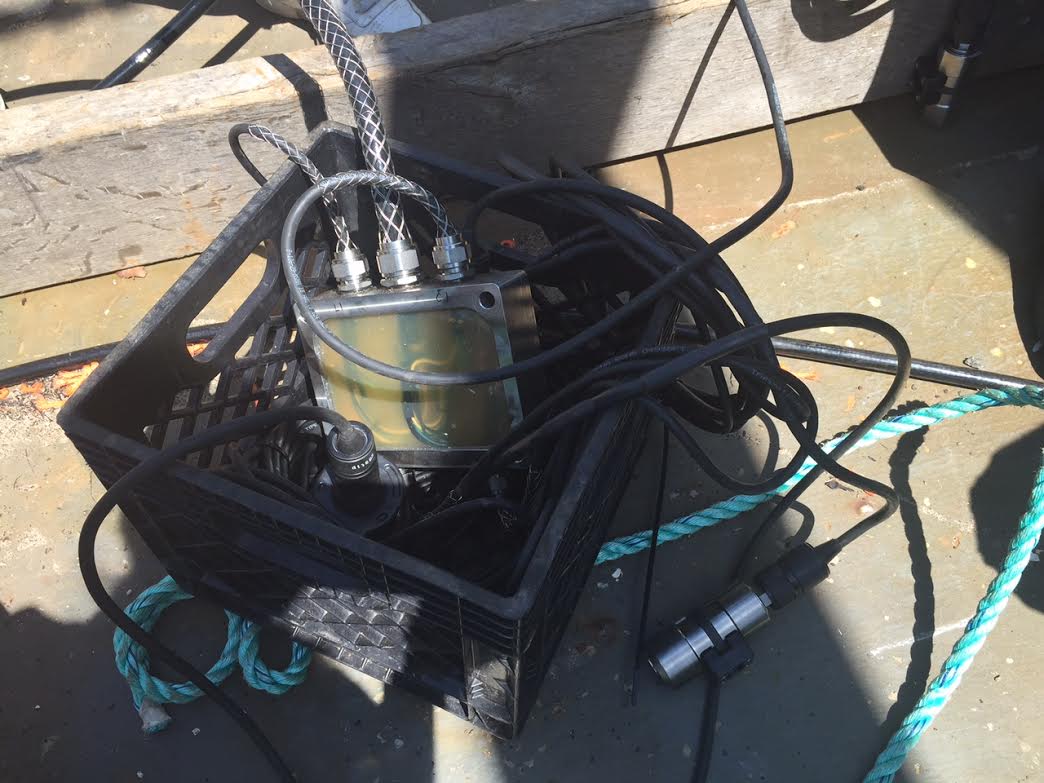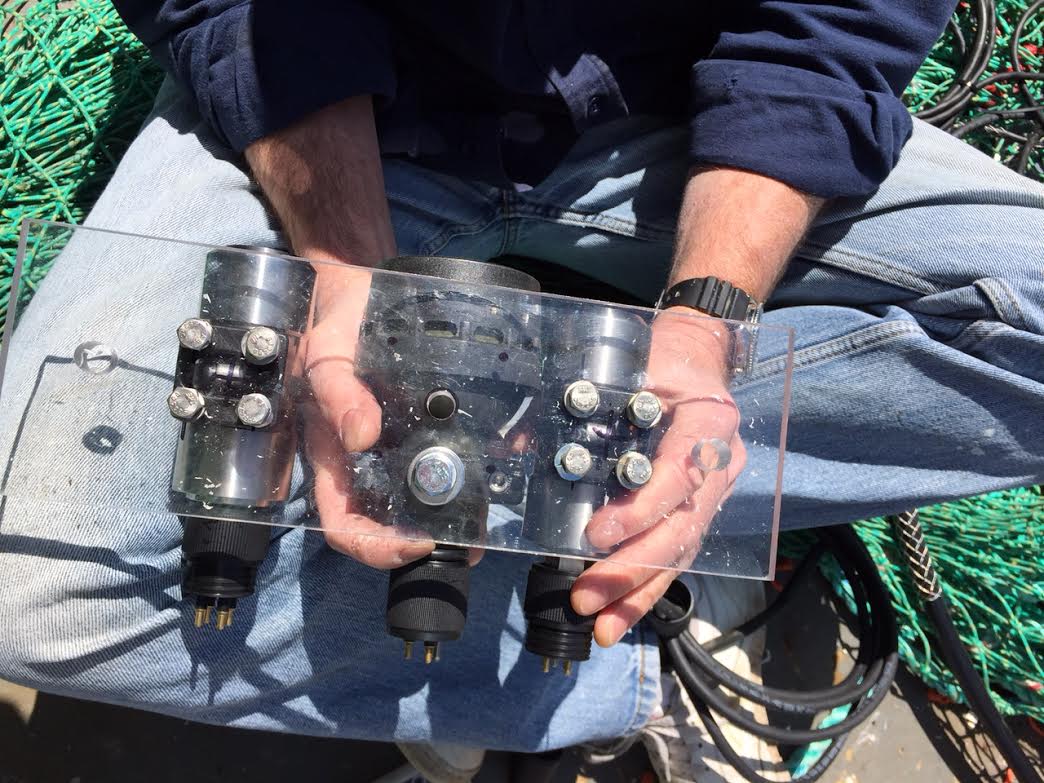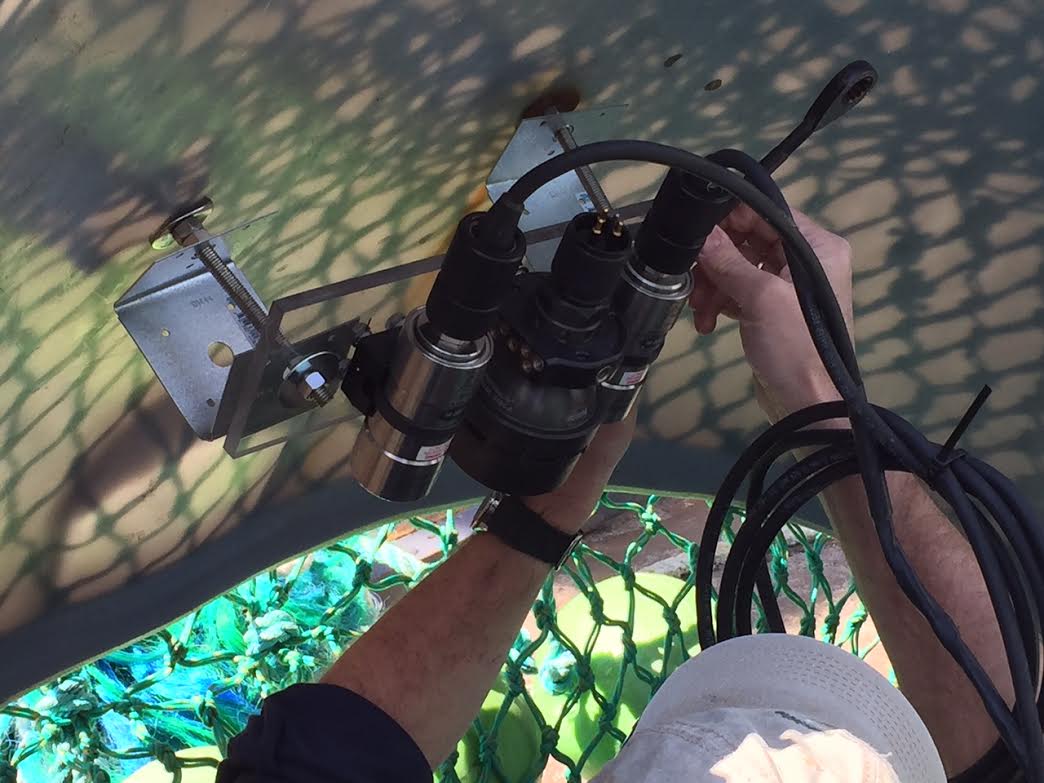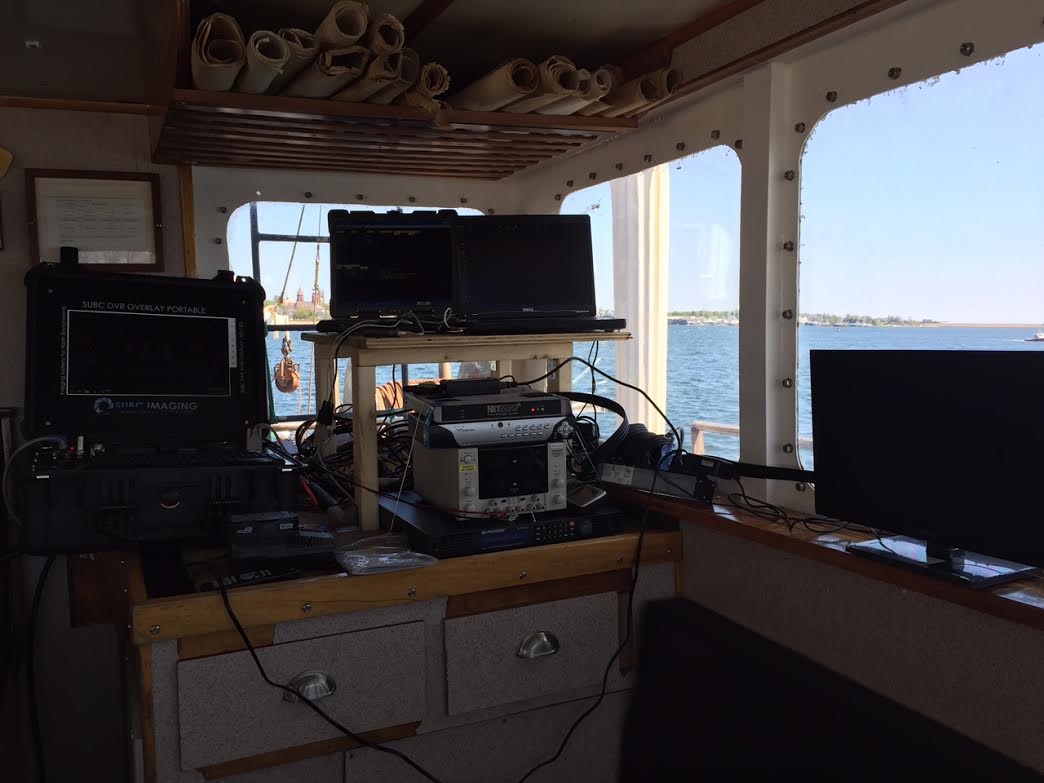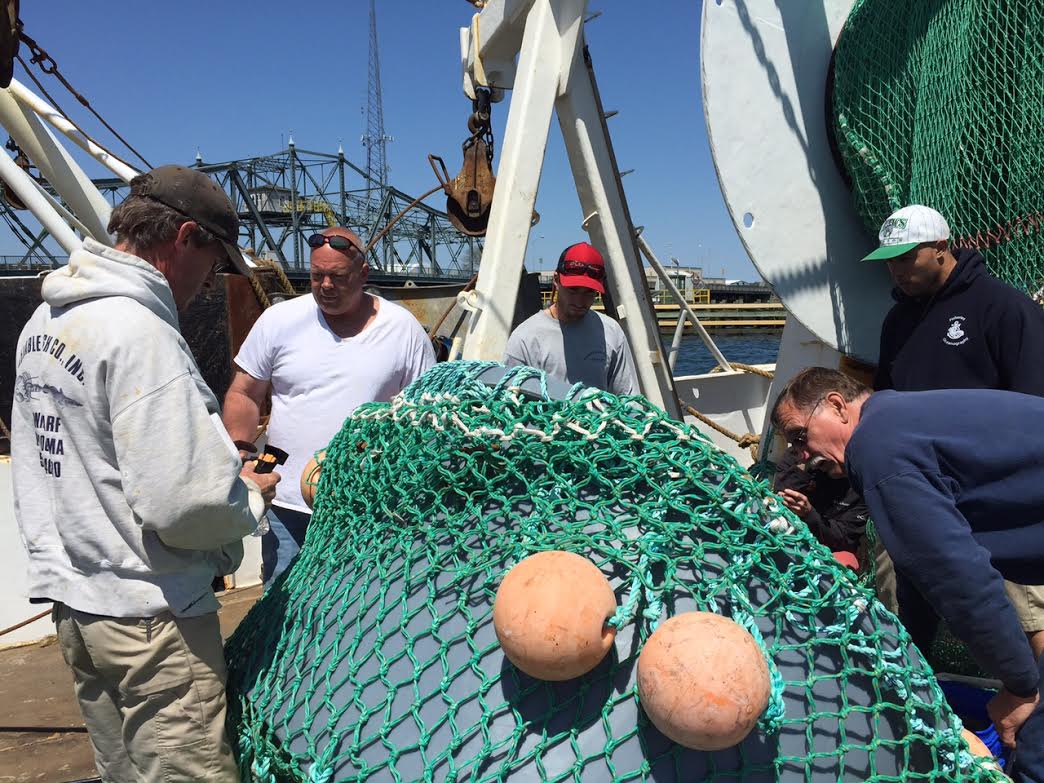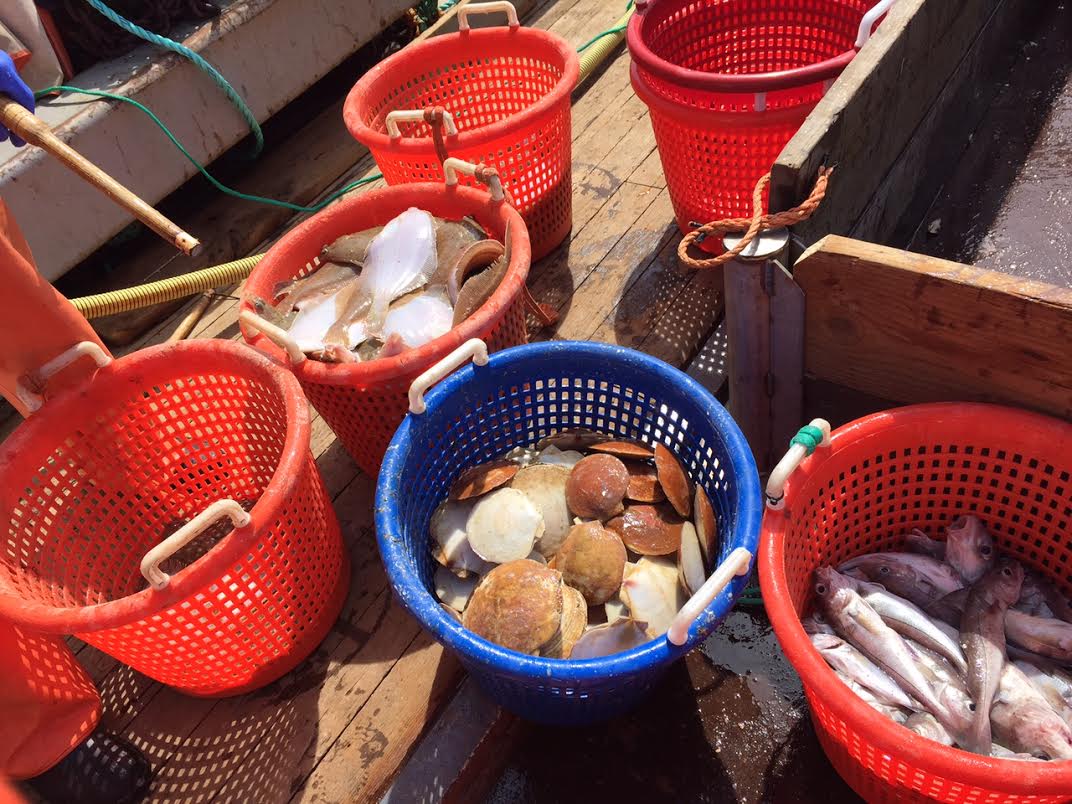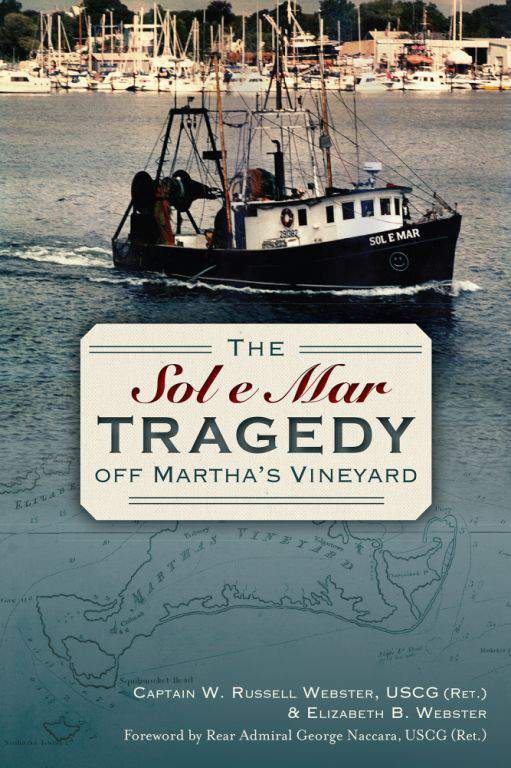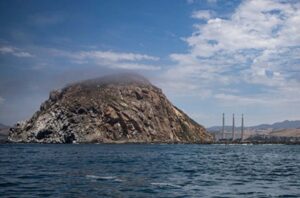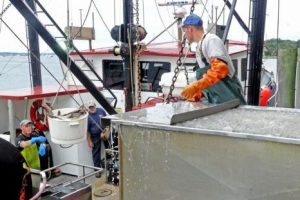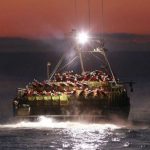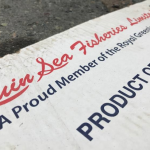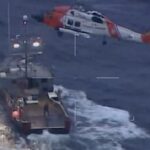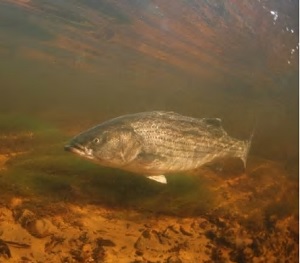Search Results for: Meghan Lapp
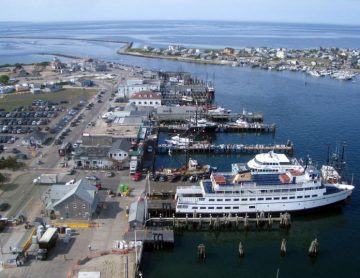
Vote against fishing restrictions seen as win for RI, Galilee
At its meeting Tuesday, the Mid-Atlantic Fishery Management Council voted 16-4 to discontinue a proposed squid buffer zone framework off the coast of Nantucket, Massachusetts, according to Meghan Lapp, fisheries liaison for Seafreeze Ltd “There were a good number of commercial fishermen, squid fishermen present. There were also a good number of people from Nantucket present. Basically everybody that wanted to speak got a chance to speak, and the council did the right thing,” she said. All members of the Narragansett Town Council had signed a letter Dec. 4 requesting the Mid-Atlantic Fishery Management Council “reject further discussion of a buffer zone for the summer squid fishery off Nantucket.” click here to read the story 15:46
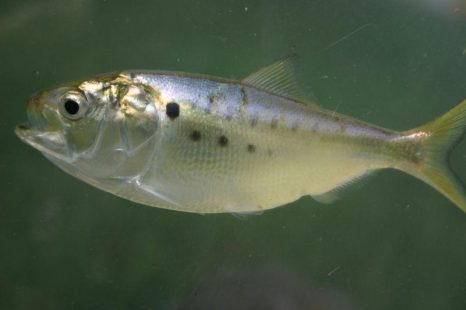
Environmentalists Are Wrong About Menhaden Fishery
Fishing companies are at odds with Rhode Island environmental advocacy groups over proposed changes for the menhaden fishing industry, Changes to the Interstate Fishery Management Plan for Atlantic Menhaden are up for a vote at the Atlantic States Marine Fisheries Commission meeting in Maryland this Monday and Tuesday. Meghan Lapp, fishery liaison for the Rhode Island-based Seafreeze Ltd, said that temporary plan shouldn’t be implemented because it’s based off of science that isn’t applicable to menhaden. click here to read the story 12:19
RNC SUPPORTS THE NORTHEAST COMMERCIAL FISHING INDUSTRY
 RI National Committeewoman Lee Ann Sennick sponsored a Resolution Supporting the Northeast Commercial Fishing Industry at the recent Summer Meeting of the Republican National Committee. Receiving widespread support, the resolution (full text of which can be seen (click here) was passed unanimously by the 168 person body. Sennick, who has professional ties to the industry, has formed a Republican Fisheries Coalition along with Richard Fuka, President of the RI Fisherman’s Alliance and Meghan Lapp, political liaison for Seafreeze Ltd. “Rich and Meghan reached out to the RI Republican Party because they have serious concerns for the future of the industry and the economic impact on our state. Those concerns have not been satisfactorily addressed by RI’s Democrat Congressional Delegation,” stated Sennick. click here to read the press release 07:10
RI National Committeewoman Lee Ann Sennick sponsored a Resolution Supporting the Northeast Commercial Fishing Industry at the recent Summer Meeting of the Republican National Committee. Receiving widespread support, the resolution (full text of which can be seen (click here) was passed unanimously by the 168 person body. Sennick, who has professional ties to the industry, has formed a Republican Fisheries Coalition along with Richard Fuka, President of the RI Fisherman’s Alliance and Meghan Lapp, political liaison for Seafreeze Ltd. “Rich and Meghan reached out to the RI Republican Party because they have serious concerns for the future of the industry and the economic impact on our state. Those concerns have not been satisfactorily addressed by RI’s Democrat Congressional Delegation,” stated Sennick. click here to read the press release 07:10
RNC SUPPORTS THE NORTHEAST COMMERCIAL FISHING INDUSTRY
Warwick, RI -RI National Committeewoman Lee Ann Sennick sponsored a Resolution Supporting the Northeast Commercial Fishing Industry at the recent Summer Meeting of the Republican National Committee. Receiving widespread support, the resolution (full text of which can be seen here, click) was passed unanimously by the 168 person body.
National Committee. Receiving widespread support, the resolution (full text of which can be seen here, click) was passed unanimously by the 168 person body.
Sennick, who has professional ties to the industry, has formed a Republican Fisheries Coalition along with Richard Fuka, President of the RI Fisherman’s Alliance and Meghan Lapp, political liaison for Seafreeze Ltd. “Rich and Meghan reached out to the RI Republican Party because they have serious concerns for the future of the industry and the economic impact on our state. Those concerns have not been satisfactorily addressed by RI’s Democrat Congressional Delegation,” stated Sennick.
“The resolution was the culmination of our research and activism, which has included working cooperatively with the new administration, and I am encouraged by the strong show of support from my colleagues at the RNC. Our next steps will be to actively use that support to advocate for passage of H.R.200 – Strengthening Fishing Communities and Increasing Flexibility in Fisheries Management Act.”
Fuka spoke to the ramifications for the industry, “Since the beginning of the Obama Administration, our nation’s oldest industry, The North East Commercial Fishing Industry, has been under siege. Businesses and lives have been destroyed, a valuable food source has all but been eliminated and the Fishermen who remain ‘battle on’ to hold on to what they have been born and raised to do, feed a nation.”
He concluded, “The Northeast Commercial Fishing Industry Resolution speaks of biblical proportions to fishermen. It identifies and speaks directly to everything that has been inflicted on this great industry. Republicans adopting this resolution is a strong start to what can truly be achieved, WE CAN MAKE COMMERCIAL FISHING GREAT AGAIN.”
The Rhode Island Republican Party | 1800 Post Road, Suite 17-I, Warwick, RI 02886
Expert’s talk at LaGrua Thursday to focus on benefits of local sea-to-table options
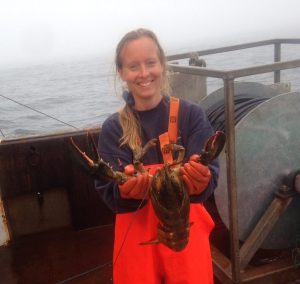 Meghan Lapp, an expert on the commercial fishing industry and its regulations, will give a talk entitled “Sea to Table: Bringing the Bounty of the Sea to You” on Thursday at 7 p.m. at the LaGrua Center at 32 Water St. The Stonington Economic Development Commission is sponsoring the presentation, which will focus on how local harvesters provide fresh seafood, navigate fishery regulations and science, and what species are fresh, local and available. Admission is free. Lapp, of Narragansett, is a fisheries liaison for Seafreeze Ltd., a producer and trader of sea-frozen fish in North Kingstown. She is on the Habitat Advisory Panel and the Herring Advisory Panel for the New England Fishery Management Council, the Ecosystems and Oceans Planning Advisory Panel for the Mid-Atlantic Fishery Management Council and the Menhaden Advisory Panel for the Atlantic States Marine Fisheries Commission.,,, “I heard what was going on with the fishing industry and the regulations and it upset me, and I got politically involved,” she said by phone on July 7. “From there I actually built commercial fishing nets in New Bedford for about four-and-a-half years and I did lobbying for the industry on my own time.” click here to read the story 13:22
Meghan Lapp, an expert on the commercial fishing industry and its regulations, will give a talk entitled “Sea to Table: Bringing the Bounty of the Sea to You” on Thursday at 7 p.m. at the LaGrua Center at 32 Water St. The Stonington Economic Development Commission is sponsoring the presentation, which will focus on how local harvesters provide fresh seafood, navigate fishery regulations and science, and what species are fresh, local and available. Admission is free. Lapp, of Narragansett, is a fisheries liaison for Seafreeze Ltd., a producer and trader of sea-frozen fish in North Kingstown. She is on the Habitat Advisory Panel and the Herring Advisory Panel for the New England Fishery Management Council, the Ecosystems and Oceans Planning Advisory Panel for the Mid-Atlantic Fishery Management Council and the Menhaden Advisory Panel for the Atlantic States Marine Fisheries Commission.,,, “I heard what was going on with the fishing industry and the regulations and it upset me, and I got politically involved,” she said by phone on July 7. “From there I actually built commercial fishing nets in New Bedford for about four-and-a-half years and I did lobbying for the industry on my own time.” click here to read the story 13:22
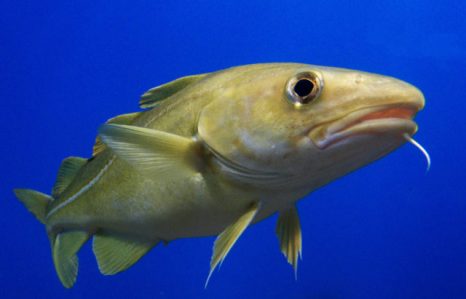
Choppy waters lay ahead for U.S. fisheries – Rebuilding Timeline – Science, or Fiction
Proposed changes to the Magnuson-Stevens Act, our nation’s fishery management law, would compound problems for the nation’s fish, says birder Harrison Tasoff. Fishery management got a significant boost when the act was reauthorized in 2007. The new legislation required the councils to base their strategies and quotas on scientific population surveys. It is crucial that these fish surveys are done by marine biologists. Professional fishermen’s knowledge of fish runs as deep as some of the waters they trawl. But their background prepares them for different kinds of tasks than a marine biologist, whose years of training equip them with the skills to conduct surveys and model ecological phenomena. The 2007 reauthorization also strengthened the timeframe that the agencies have to rebuild depleted fish stocks. Click here to read the article The Magnuson Stevens Act and its Ten Year Rebuilding Timeline: Science or Fiction? by Meghan Lapp One of the initial problems with a mandatory ten year rebuilding timeline is that it creates conflict within the law itself. Taking into account that a defined rebuilding schedule cannot be justified by science, a ten year requirement, or any time specific deadline at all,,, Click here to read the article 13:19

Commercial fishermen plan flotilla for Trump’s graduation speech at Coast Guard Academy
A group of fishermen will greet President Trump and send congratulations to graduating cadets from a flotilla on the Thames River during the United States Coast Guard Academy commencement today. “Our message is ‘make commercial fishing great again’ and it’s a congratulatory effort to say thank you to the Coast Guard class of 2017,” said Joel Hovanesian, of Wakefield, who is a member of the Rhode Island Fishermen’s Alliance. The purpose of the flotilla is also to raise the President’s awareness of regulatory issues in the fishing industry, especially since one of the platforms he ran on was over-regulation and its burdensome effects on small businesses, said Meghan Lapp, fisheries liaison for Seafreeze Ltd., of North Kingstown. “Every single fishing vessel is a small, mobile corporation, so if he’s seeing 15 or 20 boats, he’s seeing 15 or 20 small businesses right there and there’s thousands of them along the East Coast,” she said. “In the fishing industry, we’re dealing with a lot of over regulation and we believe there’s a lot of things that could be done to make the industry thrive again.” click here to read the story 07:28
Video, click here Local fishermen hope President Trump will help commercial fishing industry
We will be getting live updates, and will be posting photo’s on this page, Click here
Statoil: Fishermen lobby for new spot for proposed Long Island wind farm
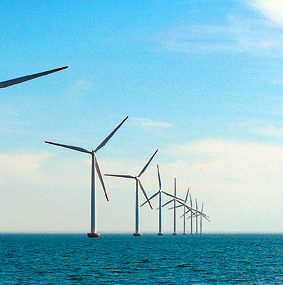 In Joe Gilbert’s view, fishermen like him shouldn’t have to compete with wind farms for a piece of the ocean. “We’re not anti-wind farm,” Gilbert said this past week. “But we don’t want to trade one renewable resource — fish — for another one — wind. They can both exist.” Gilbert is the owner of Empire Fisheries, which has four scallop and squid fishing boats based at the Town Dock. He’s also a member of the board of the Fisheries Survival Fund, one of 12 fishermen groups from New England to New Jersey opposing the federal government’s recent approval of a provisional lease to a Norwegian company that proposes to develop a wind farm on 79,350 acres of ocean bottom about 13 miles south of Jones Beach in Hempstead, Long Island. “What we’re asking is that it be relocated,” said Meghan Lapp, fisheries liaison with Sea Freeze, a squid wholesaler based in North Kingstown, R.I., that has joined the Fisheries Survival Fund in challenging the wind farm plan. The site of the proposed wind farm, fishermen say, is one of the most productive squid and scallop fishing areas in the North Atlantic. But the long trawling nets used by these fisheries could not maneuver within a “pinball machine of structures” that would constitute the wind farm, Lapp said. “It would be too dangerous.” Read the story here 09:01
In Joe Gilbert’s view, fishermen like him shouldn’t have to compete with wind farms for a piece of the ocean. “We’re not anti-wind farm,” Gilbert said this past week. “But we don’t want to trade one renewable resource — fish — for another one — wind. They can both exist.” Gilbert is the owner of Empire Fisheries, which has four scallop and squid fishing boats based at the Town Dock. He’s also a member of the board of the Fisheries Survival Fund, one of 12 fishermen groups from New England to New Jersey opposing the federal government’s recent approval of a provisional lease to a Norwegian company that proposes to develop a wind farm on 79,350 acres of ocean bottom about 13 miles south of Jones Beach in Hempstead, Long Island. “What we’re asking is that it be relocated,” said Meghan Lapp, fisheries liaison with Sea Freeze, a squid wholesaler based in North Kingstown, R.I., that has joined the Fisheries Survival Fund in challenging the wind farm plan. The site of the proposed wind farm, fishermen say, is one of the most productive squid and scallop fishing areas in the North Atlantic. But the long trawling nets used by these fisheries could not maneuver within a “pinball machine of structures” that would constitute the wind farm, Lapp said. “It would be too dangerous.” Read the story here 09:01
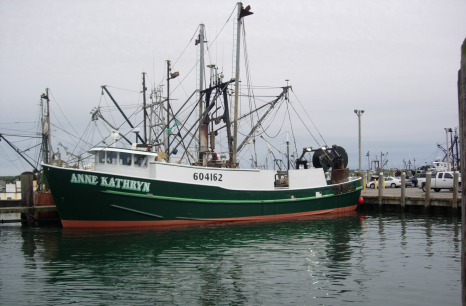
Despite recent tweaks, New England fishermen want more changes in law
In October of 2016 NOAA made changes to NS1, which aims to prevent overfishing while achieving the optimum yield from each fishery. Changes were first proposed in January 2015, and the final rule passed in October 2016 giving regional councils more latitude to set catch limits, a change that was opposed by environmental groups. Fishermen, particularly on the US east coast, have been critical for several years of what they say are rigid timelines that give regulators ten years to rebuild stocks deemed overfished. Conservation groups, on the other hand, see the added flexibility as a weakening of Magnuson-Stevens that undermines the stringent standards that brought many fisheries back to health. Read the story here 12:01
The Magnuson Stevens Act and its Ten Year Rebuilding Timeline: Science or Fiction by Meghan Lapp Click here to read this white paper
R.I. quota for menhaden the focus of debate
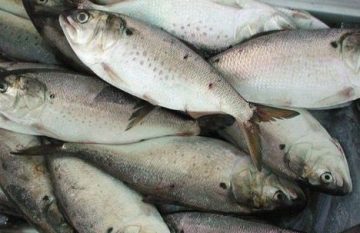 About 30 recreational and commercial fishermen, fish processors, environmental groups (like Save the Bay) and fish managers attended Monday’s public hearing on Atlantic menhaden at the URI Bay Campus held by the Atlantic States Marine Fisheries Commission. The two main issues at the hearing were the use of ecosystem-based management strategies to determine stock status and allowable catch limits, and landing time frames, which would be used to determine allocation of quota. The Atlantic menhaden plan will be the first ASMFC plan that utilizes ecosystem-based management in this fashion. Meghan Lapp of Seafreeze, Ltd., North Kingstown (the largest producer and trader of sea-frozen fish on the East Coast) and a member of the ASMFC Atlantic menhaden Advisory Panel, said “Historically, Rhode Island has landed a lot more fish than the allocation reflects.” Read the column here 16:30
About 30 recreational and commercial fishermen, fish processors, environmental groups (like Save the Bay) and fish managers attended Monday’s public hearing on Atlantic menhaden at the URI Bay Campus held by the Atlantic States Marine Fisheries Commission. The two main issues at the hearing were the use of ecosystem-based management strategies to determine stock status and allowable catch limits, and landing time frames, which would be used to determine allocation of quota. The Atlantic menhaden plan will be the first ASMFC plan that utilizes ecosystem-based management in this fashion. Meghan Lapp of Seafreeze, Ltd., North Kingstown (the largest producer and trader of sea-frozen fish on the East Coast) and a member of the ASMFC Atlantic menhaden Advisory Panel, said “Historically, Rhode Island has landed a lot more fish than the allocation reflects.” Read the column here 16:30

Some New England Fishermen Consider A Fight Over Obama’s Monument. This Is Why They Should.
When the concept of the National Marine Monument arose, it was a surprise to many people, and the notion of it becoming reality seemed far fetched. This week we learned it was reality, and it was a stinging slap in the face. Rep Rob Bishop R-Utah tipped us of with an article titled, “Obama will leave his legacy at the expense of fishermen”, Sept, 14th, on the eve of the State Departments “Our Oceans” conference in Washington, DC. The confirmation the following day was bitter for many. There have been hundreds of articles written in the aftermath from the enviro friendly, to the revelations of the many fishermen that will be affected, including some that say the industry will consider a legal challenge, and challenge that designation they should! Meghan Lapp the Fisheries Liaison for Seafreeze Ltd. and is active in the process of fishery management, wrote an article that appeared in the Massachusetts Lobsterman’s Association Newsletter pre announcement of the designation. As with all good fishery articles, it is timeless and important to be seen by as many fishermen and the general public after the fact, because it lays out the basis as to why this should be a call to action to reverse this Obama Antiquities Act overreach that, quite possibly, may not be legal at all. Click here to read the article with a number of links at the bottom of the page. 17:58
Meghan Lapp the Fisheries Liaison for Seafreeze Ltd. and is active in the process of fishery management, wrote this article that appeared in the Massachusetts Lobsterman’s Association Newsletter.
Last year, on September 3, an unexpected email announcement was distributed via NOAA’s listserve. It gave stakeholders a two week notice of a “Town Hall” meeting to be held on September 15, announcing that the Administration was considering designating several New England deep sea canyons as Marine National Monuments, for protection of deep sea corals. During this meeting, every participant was limited to a two minute time slot of verbal comments. However, we were not even sure what was being proposed, because no boundary lines had been drawn or even hinted at. We were asked to comment on the concept of a Marine Monument in the area, not an actual proposal with any defined boundaries.
Holding just this one public meeting to allow for stakeholder input, NOAA released a comment portal through which stakeholders were directed to submit further comment. Attempting to protect our vessels’ interests, I submitted not only written comments but proprietary information documenting our fishing activity in the area, to argue that our fishing grounds needed to be kept open. When I inquired, no one at NOAA could tell me how long the comment period would remain open, although the agency was administering the comment portal. Neither could anyone at the agency inform me how or why this discussion was initiated, if there was any specific process being followed, who would be reviewing our comments, who would be presenting them, and to whom. As a company which has participated many times in public process, especially on fisheries issues, it is disturbing that we were left completely in the dark with an issue that has the potential to put us out of business.
This initiative came soon after the Mid Atlantic Council had completed a Deep Sea Corals Amendment designed to protect deep sea corals in offshore canyons, the same alleged justification for the proposed Marine Monuments. The MAFMC’s Deep Sea Coral Amendment process included extensive stakeholder input, including an interactive, collaborative workshop to draw boundary lines, in which Seafreeze was an active participant. This workshop involved many of the same individuals and environmental organizations who have been intensely lobbying for Marine Monument designation of the New England canyons. The push for Marine Monument designations of the New England canyons also coincided with the New England Council’s resuming of work on its own Deep Sea Corals Amendment in the area in question, making it very clear that the same environmental groups which weeks before had been praising and receiving awards for participation in the MAFMC Corals Amendment’s collaborative process were not at all interested in true collaboration with the fishing industry moving forward. They clearly did not get what they wanted through a transparent and deliberative process, so moved to eliminate that process altogether by designation of Marine Monuments rather than engagement with the New England Fishery Management Council.
In fact, shortly after the single public meeting, fisheries media outlet Saving Seafood requested and obtained public record emails detailing strategic lobbying activity by a coalition of environmental groups including Conservation Law Foundation, National Resources Defense Council, Pew Charitable Trusts, Earthjustice, National Geographic, and the Center for American Progress, which included not only a concrete monument proposal but also allusion to inside information, warnings about talking to the “outside world” about their campaign, and possible designation dates. Although no designation occurred at that time, the onslaught of misinformation to the public and pressure on the Administration continues through these organizations.
Several attempts have been made by Congress to block any New England Marine Monuments and Presidential use of the Antiquities Act to designate them. Following the “Town Hall” meeting and environmental email scandal, the House Committee on Natural Resources held an oversight hearing in the issue and wrote a letter to the Administration requesting further information on its designation of marine monuments. Both focused on the lack of transparency, “apparent collusion and influence of environmental groups with regard to the Interior Department’s designation process”, and lack of local input. Congressmen Walter Jones (NC) and Don Young (AK) cosponsored a bill, H.R. 330 or the Marine Access and State Transparency (MAST) Act, which would prevent any President from unilaterally designating marine monuments without the approval of Congress and the legislature of each state within 100 nautical miles of the proposed monument. Additionally, the Atlantic States Marine Fisheries Commission has unanimously agreed that the New England Corals Amendment should be allowed to continue without Presidential declaration of a marine monument; but also that if the designation were to go forward, such a monument should be limited to waters deeper than 900 meters, thereby protecting important fishing grounds. Unfortunately, disregard for the facts and impacts on New England fishing communities have led to another recent proposal for New England Marine Monument designation through the elected officials of Connecticut. This proposal would also severely damage New England fisheries.
Environmental claims that these monument proposal areas are “pristine” , “untouched” and in need of protection do not acknowledge the fact that extremely productive fisheries have been operating within them for decades. They also do not acknowledge that the marine life, including deep sea corals, that may live there still exist because we do not fish where they are. The corals which may exist inside a canyon are protected by virtue of their habitat. As our vessels are trawl vessels, I will approach the environmental misinformation from that standpoint.
According to the National Resources Defense Council webpage, “one pass of a weighted trawl net scraping along a canyon wall can destroy corals”. The problem with this statement is that trawls cannot operate on canyon walls. In order to maintain the proper geometry necessary for a trawl to work, it cannot be towed sideways or horizontally on a canyon wall. Furthermore, nets are made of twine which, even if it could somehow be towed horizontally, would be shredded by the rocky canyon walls and the coral itself, costing tens of thousands of dollars in damage. Clearly, no fisherman would risk tens of thousands of dollars’ worth of damage to his gear. Trawls only operate on the top of the edges of canyons, where the terrain is flatter and smooth. These areas are not coral habitat but have been included in the proposed monument designations, apparently for no other reason than to prohibit fishing in the area.
According to National Geographic, the “canyons of Georges Bank” needing “protection” contain “rock [that is] so excavated out by all the living creatures that scientists call them ‘pueblo communities’”. It is true that some of the canyons in question, specifically Oceanographer and Lydonia Canyons, are already closed to mobile bottom tending gear through the Tilefish Gear Restricted Areas (GRAs) due to their “pueblo habitat”. However, this habitat is not rock, which is the preferred habitat of corals; it is clay. “The complex of burrows in clay outcrops along the slopes and walls of submarine canyons, and elsewhere on the outer continental shelf, has been called ‘pueblo’ habitat because of its similarity to human structures in the southwestern United States”, according to the Tilefish Fishery Management Plan. Furthermore, the clay pueblo habitat has already been protected by the GRAs through fishery management, so the areas are not in need of protection.
Many environmental organizations such as Conservation Law Foundation, Pew Charitable Trusts, and National Geographic are claiming that the canyons are “increasingly vulnerable to overfishing”, “under growing threat of destruction from overfishing”, and “if the fishing threat isn’t permanently curtailed by the monument designation it could decimate the wildlife” such as “squid, herring…and other species”. This is an outright lie. The Magnuson Steven Act of 2007, which governs federal fisheries, mandates that fishery management plans “shall…prevent overfishing”. Threats of overfishing are ever decreasing, not increasing. Additionally, claims that the “wildlife population densities around these areas ‘are like a time machine to the New England of 400 years ago’…before the onset of overfishing” contradict themselves in the sense that not only do healthy fisheries currently exist in the area , but neither are they overfished.
The primary trawl fisheries occurring in the monument proposals are squid, mackerel, butterfish, and whiting, and since herring is specified by the environmental community I will address that species also. All of these fisheries are managed and regulated by the Magnuson Act, and none are overfished. In fact, squid populations are “booming” in New England according to a recent article by Science Magazine, and squid and butterfish are projected to be “winners” in predicted climate change in the region. Butterfish numbers are nearly twice the scientifically targeted biomass, and mackerel is scheduled to undergo an assessment this year. The herring stock is at its highest levels ever recorded, and fishing mortality rates are at their lowest levels since 1965. Both the northern and southern whiting stocks are healthy and experiencing strong recruitment. Allegations of overfishing are clearly fabricated.
These areas are extremely productive and support countless fishery related jobs, in addition to a consistent supply of healthy seafood for the U.S. public. Federal fishing effort is catalogued according to catch by statistical area. From 2005-2014 the 10 year average annual harvest of squid (calamari), mackerel, butterfish, herring and whiting from the statistical areas proposed for monument designation was over 8.4 million lbs., supporting individual vessels, crews, dockside facilities and processors, restaurants and tackle shops, cold storage facilities, fishing gear and fuel businesses, and the list could go on. In addition to these species, other fisheries that occur in the areas include lobster, Jonah crab and red crab. Each of these fisheries supports their own economic activity and families.
Unilateral executive designation of marine monuments would devastate these fisheries and the Americans that rely on them. Contrary to general public knowledge, fishing vessels do not have access to the whole ocean and cannot just “relocate” their activity. The fishing industry is restricted by many area closures, gear restricted areas, seasonal quotas, area quotas, and other measures that limit where they can go, when they can go there, and what they can catch at that time, besides the fact that certain fish live in certain areas. Access to the area proposed for a marine monument is critical to the survival of these fisheries.
Although it will be the Administration that ultimately makes the decision with regards to whether or not a monument will be designated and where it may be, it has been clear from the beginning that this process has been initiated and propagated by the environmental community through a continual flow of misinformation. This is unacceptable. It is deceptive to the American public, Administration and lawmakers, and completely disregards the potential loss of healthy seafood, jobs, families, personal investments and life savings that fishermen have tied up in their vessels, and the communities that rely on them. Such environmental organizations should not be allowed to drive any governmental process.
See http://naturalresources.house.gov/newsroom/documentsingle.aspx?DocumentID=399424.
See https://jones.house.gov/press-release/jones-fights-save-fishing-access-atlantic.
. See http://www.savingseafood.org/wp-content/uploads/2016/05/pr14MarineMonuments.pdf.
See https://www.blumenthal.senate.gov/newsroom/press/release/connecticut-delegation-urges-president-obama-to-designate-new-england-coral-canyons-and-seamounts-as-first-ever-atlantic-marine-national-monument and http://www.blumenthal.senate.gov/imo/media/doc/2016_08_02%20Blumenthal%20et%20al%20Letter%20to%20President%20MAP%20ATTACHMENT_FINAL.pdf.
See https://www.greateratlantic.fisheries.noaa.gov/nero/nr/nrdoc/09/09tilefishGRAreas.pdf.
. See http://static1.squarespace.com/static/511cdc7fe4b00307a2628ac6/t/5176d866e4b0e95e599d2670/1366743142476/Tilefish_FMP.pdf.
See http://www.clf.org/strategies/protecting-special-places/ ; http://advocacy.pewtrusts.org/ea-action/action?ea.client.id=1793&ea.campaign.id=41754; and http://news.nationalgeographic.com/2016/03/160330-atlantic-marine-monument-cashes-ledge-new-england-seamounts-georges-bank/.
See http://news.nationalgeographic.com/2016/03/160330-atlantic-marine-monument-cashes-ledge-new-england-seamounts-georges-bank/.
See http://static1.squarespace.com/static/511cdc7fe4b00307a2628ac6/t/572ce64dc6fc08d82d934af3/1462560335098/MSB_APInfo-2016.pdf; https://www.greateratlantic.fisheries.noaa.gov/sustainable/species/whiting/index.html; https://www.greateratlantic.fisheries.noaa.gov/sustainable/species/atlherring/index.html.
See http://www.sciencemag.org/news/2016/05/world-octopus-and-squid-populations-are-booming.
See http://static1.squarespace.com/static/511cdc7fe4b00307a2628ac6/t/57ab8599440243ba6de65c8b/1470858689147/EAFM-Guidance-Document-Aug2016.pdf.
See http://nefsc.noaa.gov/publications/crd/crd1403/parta.pdf.
See http://www.nefsc.noaa.gov/saw/herring-review-2015/pdfs/working-paper-1-deroba.pdf.
See http://s3.amazonaws.com/nefmc.org/Alade-presentation-Hake-Asssessment-update.pdf.
The sensible changes needed for the Magnuson Stevens Act Reauthorization
A quote from the article Longstanding fisheries act doesn’t need changing says Hogarth and Murawski, click here “Much of our recent success has stemmed from quick action and firm timetables for rebuilding, and that approach has clearly worked.”
Well No, that’s not quite true… Allowable Catch Quotas are still shrinking each year for most fisheries in spite of NOAA’s declarations of eliminating “overfishing” because the stock population recovery is not living up to unrealistic timelines perhaps? And more than half of the local family fishing operations have been eliminated. Fishing ports along with shoreside support businesses are disappearing. So what exactly is the authors’ idea of having clearly worked?
I guess it depends on the goal of all this management.
East Coast fishing communities have been devastated by the legislated rigidity in the timelines for rebuilding historically varying fish populations. Even Jane Lubchenco, NOAA Fisheries Director admitted in a congressional hearing that there was no scientific basis for the rigid rebuilding timelines in the 2006 Reauthorization of Magnuson Act. She was a contributor to the infamous “Oceans of Abundance” treatise http://www.edf.org/sites/defau… This was an eco-political leaflet and primer sponsored by and filled with NGO lobbyist talking points aimed at the signers of the 2006 reauthorization that installed the rigid timelines.
The proposals for flexibility, transparency, predictability, fishermen representation, and taking into account the environmental and socio-economic aspects of fishery management in this current reauthorization bill before Congress are long overdue. And actually most of these current reauthorization proposals are simply reinforcing and making more specific several existing—but mostly ignored by management—MSA Standards relating to “setting catch limits based on science” and insuring that it’s the “best available science” through utilizing cooperative surveys and assessments from “other sources” (National Standard 2). Current proposals also reinforce the National Standards 1, 4, and 8, which account for the survival of the fishing communities along with the fish.
Flexibility and transparency as stated in the House Proposals does not mean the elimination or undermining the necessity of catch limits based on science and flexibility in rebuilding timelines is not “…a slippery slope back to unsustainable fisheries.”
Flexibility in dealing with naturally varying fish growth and recovery rates is intelligent management practice. The current House Bill proposals clearly do not reverse or “gut” any of the basic fish replenishing tenets of the Magnuson Stevens Act:
Please see original proposals from the House Natural Resources website: http://naturalresources.house….
The draft proposal, while maintaining the key themes of the Act, would make the following improvements:
- Provide flexibility for fishery managers when rebuilding depleted fisheries
- Provide flexibility for fishery managers when setting annual catch levels
- Provide more transparency for fishermen and others in both science and management
- Provide more predictability and stability for fishermen and fishery-dependent communities
- Allow fishery managers to take the economic impact of their decisions into account when setting harvest levels and developing rebuilding plans
- Allow fishery managers to take environmental conditions into account when establishing harvest levels and developing rebuilding plans
- Allow fishermen in regions where catch share programs have been controversial to have a say in whether a new catch share program will be implemented and to be provided better information when considering such a program
- Provide a schedule for obtaining better fishery dependent and fishery independent data especially for data poor fisheries and provide greater protection for confidential information submitted to regulatory agencies
- Authorize appropriations for an additional five fiscal years at current funding level
None of the proposals are an attempt to “…loosen effective protections that have been so successful in eliminating overfishing and rebuilding stocks”.
All the proposed changes are suggesting is to include the fishing communities in the process and some common scientific sense regarding rebuilding expectations . After all this is “Fisheries” management, not “Fish” management, right?
For additional reading on the MSA proposed improvements please papers by Meghan Lapp and Dr. Brian J. Rothschild
The Magnuson Stevens Act and its Ten Year Rebuilding Timeline: Science or Fiction? By Meghan Lapp http://centerforsustainablefis…
IMPROVING THE MAGNUSON STEVENS ACT, Brian J. Rothschild (11/3/13) http://centerforsustainablefis…
Confusion, rancor, and yes, fear, after LIPA wind farm meeting postponed
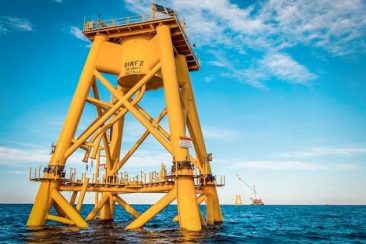 New York State’s decision to postpone LIPA’s consideration of an offshore wind farm that is popular with environmentalists prompted confusion and rancor in its aftermath, as the Cuomo administration works on a wind-energy blueprint that could include other areas directly off Long Island. LIPA trustees had been scheduled to vote last Wednesday on a 90-megawatt wind-farm proposal by developer Deepwater Wind in the federal Rhode Island wind-energy area 30 miles from Montauk Point. But a late-night decision by NYSERDA prompted cancellation of the board meeting, an unprecedented move, and postponement of the vote. The state’s decision to postpone the trustee vote disappointed Long Island environmentalists and at least one East End official, who have expressed frustration for years about LIPA’s on-again, off-again wind ambitions. One group was rumored to have bought Champagne for the board meeting. “It’s awful, pulling a major meeting like this at the last minute,” said Gordian Raacke, executive director of Renewable Energy Long Island and a longtime advocate for solar and wind power. “It causes a lot of uncertainty and it scares people. lol! ok! “Those [potential] wind-energy areas would destroy multiple fisheries,” said Meghan Lapp, fisheries liaison for Seafreeze Ltd., a Rhode Island commercial fishing group. Added Drew Minkiewicz, an attorney for the Fisheries Survival Fund, representing commercial scallopers, “All of them [wind-energy areas] are right smack dab in the middle of scallop grounds.” Now, that’s scary. Read the rest here 15:29
New York State’s decision to postpone LIPA’s consideration of an offshore wind farm that is popular with environmentalists prompted confusion and rancor in its aftermath, as the Cuomo administration works on a wind-energy blueprint that could include other areas directly off Long Island. LIPA trustees had been scheduled to vote last Wednesday on a 90-megawatt wind-farm proposal by developer Deepwater Wind in the federal Rhode Island wind-energy area 30 miles from Montauk Point. But a late-night decision by NYSERDA prompted cancellation of the board meeting, an unprecedented move, and postponement of the vote. The state’s decision to postpone the trustee vote disappointed Long Island environmentalists and at least one East End official, who have expressed frustration for years about LIPA’s on-again, off-again wind ambitions. One group was rumored to have bought Champagne for the board meeting. “It’s awful, pulling a major meeting like this at the last minute,” said Gordian Raacke, executive director of Renewable Energy Long Island and a longtime advocate for solar and wind power. “It causes a lot of uncertainty and it scares people. lol! ok! “Those [potential] wind-energy areas would destroy multiple fisheries,” said Meghan Lapp, fisheries liaison for Seafreeze Ltd., a Rhode Island commercial fishing group. Added Drew Minkiewicz, an attorney for the Fisheries Survival Fund, representing commercial scallopers, “All of them [wind-energy areas] are right smack dab in the middle of scallop grounds.” Now, that’s scary. Read the rest here 15:29
Listen – Todays Oversight Hearing on the Implications of President Obama’s National Ocean Policy
Following unsuccessful efforts to pass major national ocean policy legislation during three successive Congresses under both Democrat and Republican majorities, the Obama Administration initiated the development of a sweeping multi-agency federal management plan for oceans. This effort culminated with the July 2010 issuance by the White House of National Ocean Policy Executive Order 13547. Invited Witnesses: Mr. Dan Keppen Executive Director, Family Farm Alliance Klamath Falls, Oregon Ms. Elizabeth Kerttula Director, National Ocean Council Washington, D.C. Mr. Jim Lanard Chief Executive Officer, Magellan Wind Collingswood, New Jersey Ms. Meghan Lapp Fisheries Liaison, Seafreeze, Ltd. North Kingstown, Rhode Island Mr. Bob Zales President, National Association of Charterboat Operators Hurley, Mississippi 15:47
SMAST Yellowtail Flounder Survey, May 14, 2015 – And it begins!
The first day, May 14, 2015, getting settled and geared up to begin a nine day venture to get some film, see some fish, lots of fish.
The owner of the 82-foot F/V Justice is Danny Eilertsen.
The Captain is Ronnie Borgeson. Ronnie has the F/V Angenette, which is his own boat. Crew is Tim Barrett of the F/V Odessa, Al Gerry of the F/V Raptor, and Meghan Lapp of Seafreeze Ltd.
The SMAST team is Dr. Kevin Stokesbury, Erin Adams, Travis Lowery, and Eli Powell. Also on board is Don Cuddy of the Center for Sustainable Fisheries.
This article from Posted Nov. 8, 2013 at 12:01 AM at Southcoasttoday Another try at video-counting the fish, Testing is underway for a radically different method of counting fish, a notoriously difficult thing to do, but the thing that everybody says they want and need.
We will be receiving daily updates from the vessel, and here is todays: received May 16,
13:22, 5/15/2015Yesterday was first day of fishing. Started just inside Closed Area 2 at 60 meter depth contour and followed it north towards Hague Line. Did three 1/2 hr closed tows, one 2 hr open tow, another 1/2 hr closed tow, then one 2 hr open tow. Today finishing 60 m contour, then will head east to 70 meter contour and follow south.
22:03, 5/16/2015Started off this am to finish 60 m contour. Did 3 30 minute closed tows, 1 two hr open tow, 3 more closed and then started an open. During that tow, crossed doors. Trying to get them uncrossed something happened to camera/wire/connection, not sure what prob is. Will try to fix. Not seeing as much fish as last time, but had 3 tows w lots of herring, never had that before.
21:08, 5/17/2015 – No Luck with Cameras, Because we only got the cameras built just before the trip, we didn’t have the necessary equipment with us to troubleshoot the camera problem. So we are finishing the trip with sets of 3 closed tows in every location we had done a closed tow last spring. The sets of 3 closed tows are being used for testing spatial and technical accuracy of the technique we are using. One of the SMAST students on board will be doing his thesis on this. Great calm weather.
21:07, 5/18/2015 – We did 9 closed tows, 3 sets of 3, at closed tow locations from last spring. Went well, but not many fish, no volume. A month and a half later w survey his spring than last, probably season has lot to do with it. Lots of scallops though, one tow w 29.5 bushel of scallops. Now in open area, will do more closed tows in open area tomorrow.
22:36, 5/19/2015 – Heading in – Today had successful day, 9 closed tows- 3 sets of 3- got a lot done. One tow pure dogs, had to let go. Lots of fluke, not too many yellowtails. Should be in tomorrow afternoon. Then you can get full scoop from Kevin.
The Crew
The third wire winch for the wire that goes to the cameras.
Loading on everyone’s gear.
The net with the tube that mounts the cameras and keeps the coded open.
This is one of the cameras.
New Bedford: Winners showed their skill at waterfront festival
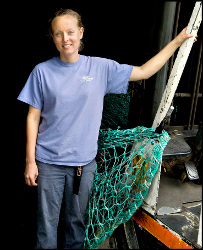 On Saturday ,groundfishing skills were highlighted with a net-mending competition emceed by net designer Tor Bendiksen of Reidar’s Manufacturing, and a rope splicing contest emceed by Barbara Merry of Marlinspike Artist. Winners of the net mending competition were Meghan Lapp, Geoffrey Hatfield and Sarah Fortin, while Kevin Curole of Grand Isle, Louisiana, won the splicing contest. Read the rest here 09:47
On Saturday ,groundfishing skills were highlighted with a net-mending competition emceed by net designer Tor Bendiksen of Reidar’s Manufacturing, and a rope splicing contest emceed by Barbara Merry of Marlinspike Artist. Winners of the net mending competition were Meghan Lapp, Geoffrey Hatfield and Sarah Fortin, while Kevin Curole of Grand Isle, Louisiana, won the splicing contest. Read the rest here 09:47
The Magnuson Stevens Act and it’s Ten Year Rebuilding Timeline: Science or Fiction?
By Meghan Lapp
Introduction
Under the Magnuson Stevens Act (MSA), regional Fishery Management Councils must develop a rebuilding plan for every overfished fishery, and must “specify a time period for rebuilding . . . that shall be as short as possible . . . and not exceed 10 years.”[3] Not only is this ten year time frame completely arbitrary and not based on any scientific reasoning, it is riddled with legal, operational, and other scientific issues. This paper is designed to briefly outline some of those issues and analyze the proposed redrafting of the rebuilding provision in the United States House of Representatives’ Discussion Draft issued on December 18, 2013.
The arbitrary nature of a ten year rebuilding requirement is not a new issue. No scientific basis or analysis was involved at all in choosing a period of ten years.[4] The requirement was a purely political decision. In fact, there are no scientific grounds for justifying any specific value as a standard for a fish stock rebuilding time.[5] For the past several years, scientists, fishermen and Congress have highlighted the need for reconsideration of this provision. In both 2010 and 2012, in an effort to invoke reform, thousands of commercial and recreational fishermen from across the nation rallied in Washington, DC. [6] Additionally, legislators have made multiple attempts to introduce more flexibility into the law, through such proposals as the Flexibility in Rebuilding American Fisheries Act 2009[7] and the Flexibility and Access in Rebuilding American Fisheries Act of 2011.[8] While no change to the current law has yet been enacted, awareness of the issue has been continually heightened. Most recently, on December 18, 2013, the U.S. House of Representatives released a Discussion Draft called “Strengthening Fishing Communities and Increasing Flexibility in Fisheries Management Act,” to address MSA reauthorization and needed changes to the Act. Among the several proposals in the Discussion Draft is the elimination of the ten year rebuilding period and acknowledgement that depletion of fish stocks may owe to factors other than fishing.
Legal Issues
One of the initial problems with a mandatory ten year rebuilding timeline is that it creates conflict within the law itself. Taking into account that a defined rebuilding schedule cannot be justified by science, a ten year requirement, or any time specific deadline at all, is contrary to the MSA’s stated purpose to “promote domestic commercial and recreational fishing under sound conservation and management principles”[9] through “the best scientific information available.”[10] The MSA’s intended policy to utilize “the best scientific information available; [which] involves, and is responsive to the needs of, interested and affected States and citizens”[11] is impossible to realize and is violated when an arbitrary ten year timeline overrides those needs of affected parties.
A rigid rebuilding schedule cannot coexist with socioeconomic impact considerations, as required by National Standard 8.[12] The two concepts are at odds with each other and, as a result, true balance is impossible to achieve. In fact, the ten year rebuilding timeframe is considered by the agency to be the only management option available, thus leading to meaningful alternatives not being considered.
Perhaps the starkest example of this can be found within the New England groundfish industry. In the case of the New England groundfish fishery, the combination of the ten year timeline and highly controversial rebuilding targets, has both in the past and present required measures so draconian as to virtually guarantee the permanent non-participation of some of this country’s oldest fishing communities to be considered as the only management options available.[13] This has currently led to the Secretary of Commerce declaring an Economic Disaster and Congress appropriating disaster relief funds to the area. What is even more concerning is that there is no indication that jobs lost in New England are being found in other fishing ports outside the region. The pace of rebuilding, not the rebuilding itself, is what drives this type of impeding economic and social devastation.[1]
As the law now reads, both the ten year rebuilding requirement and the socioeconomic interests of fishing communities are intended to formulate management plans. However, in its agency interpretation and management practice, the ten year requirement is interpreted as controlling, completely negating any legal safeguards for the fishing communities. [2] The ten year rebuilding period provision therefore defeats the purpose of the Act, nullifies other provisions of the MSA, and departs from fisheries management having a solid foundation on science. The legal issues with the ten year rebuilding period lead to further scientific, management, and socioeconomic issues.
Scientific Issues
In 2010, at the request of Congressman Barney Frank and Senator Olympia Snowe, NOAA funded a study by the highly respected and prestigious National Academy of Sciences’ (NAS) National Research Council (NRC) regarding the MSA’s rebuilding requirements, particularly the arbitrary ten year timeline. To complete the study the NRC formed the Committee on Evaluating the Effectiveness of Stock Rebuilding Plans of the 2006 Fishery Conservation and Management Reauthorization Act (hereinafter, “Committee”) of highly distinguished fisheries experts throughout the nation. The resulting report was recently released in September 2013. The NRC strongly advocated for the removal of the ten year timeline and recommended approaches that “focus more on meeting selected fishing mortality targets than on exact schedules for attaining biomass targets” such as is presently in place with the ten year requirement.[3]
The Committee also found that “mixed outcomes of rebuilding plans have added to concerns about significant social and economic costs associated with the implementation of time-constrained rebuilding plans”. The Committee concluded that a legal and policy scheme that places a strict timeline on biomass targets must be reconsidered. The Committee made several findings throughout the report, including acknowledging that rebuilding is often slower than expected. The Committee attributed slow rebuilding to due to ecological and environmental conditions and other variables, such as the high uncertainties surrounding population projections used in rebuilding analysis. Therefore, keeping fishing mortality at a constant level below that at the current target of maximum sustainable yield (MSY) “may forgo less yield and have fewer social and economic impacts than a rule that requires ever more severe controls to meet a predetermined schedule for reaching a biomass target”, i.e. a slower pace of rebuilding is preferred over one that forces intensifying controls to try to keep rebuilding on schedule. [1] In fact, of the five key findings of the Committee, all of which have been suggested as reasons for policy change, the most detailed and deliberated upon is that dealing with the removal of a strict rebuilding schedule, thus suggesting a strong consensus and belief among the Committee for a change in the law.[2]
- Uncertainty and Data Limitations are in Direct Conflict with the Fixed Timeline
Uncertainty and data limitations were also discussed by the Committee. Under the MSA, fishery stocks are managed according to the concept of maximum sustainable yield (MSY). However, MSY “is not fixed” and management reference points based on MSY “have a level of uncertainty that depend on the amount and quality of information available”. Even in the case of data-rich species, estimates may be imprecise. [3] To require fish stocks to rebuild within a fixed timeframe while the target they must reach is itself unfixed, not to mention uncertain, is unrealistic. In plain language, the MSA as it is written today mandates that stock projections hit a moving target that cannot be defined, but do so within a defined period.
To compound this issue, the Committee report found that the stock projections themselves are uncertain and subject to a high degree of variability. The majority of stock assessments and associated projections do not include all relevant sources of uncertainty, such as ecosystem dynamics, environmental conditions, etc; therefore, “the variation shown in projections underestimates the true level of uncertainty involved and expectations associated with rebuilding timelines should be tempered given these considerations.”[4] Another reason for uncertainty is variation among assessment and/or projection models themselves. Oftentimes, models can be intrinsically imprecise, or different models can produce different outcomes, even to the point of one model designating a stock as overfished while another designates it as healthy.[5] Some models actually produce results that are pure impossibilities.[6]
This significant variability in models and projections combined with the ten year rule leads to discontinuity in management because a small change in information or model assumptions can lead to a major change in stock status and rebuilding time.[7] In 2010, for example, the scientific status of New England pollock was found to have a 600% discrepancy between assessments only months apart.[8] While this degree of variability may not occur in every case, the effect that such possible uncertainty can, and does, have on related quotas is enormous. By such resulting sharp increases or decreases in quota and rebuilding time on a regular basis, is in essence like a yo yo[9], producing a steady amount and supply of fish to the market becomes an impossibility. The sharp increases and decreases and inconsistent supply of fish to the market result in a number of consequences, including, but not limited to fishing communities losing markets to foreign imports,[1] fishermen receiving low prices for their catch, and the inability of a fishing community to develop a stable economy. How effective management is translates into how economically prosperous a fishing community is. The effects of “yo yo” science and management puts both the Nation and fishing communities at a disadvantage.
- Science and Law must shift towards fluid methodology that accounts for dynamic ecosystem functions
Science is increasingly recognizing ecological and other factors that play a large part in the rebuilding of fisheries. Population behavior that depends on the ecosystem state has been termed “nonlinear dynamics”. Nonlinear dynamics includes regime shifts among species and natural cycles.[2] The existence of nonlinear dynamics, as well as a growing consensus on the importance of the ecosystem and multi-species effects, “has profound implications for the way we should think about . . . how we model fish populations, and ultimately our expectations for stock rebuilding.”[3] Although a complex issue to address in a management sense, headway is being made, and a move away from using purely static, statistical methods as have been heretofore relied upon is being identified as the way forward.[4] This is a major paradigm shift and a positive step in the right direction as far as fishery management is concerned and must be mirrored by management requirements. If science and analysis must move away from rigid methodology that is disconnected from the environment, rigid statutory rebuilding requirements must do the same.
Environmental conditions, natural cycles, and predator-prey relationships are all dynamic ecosystem functions that cannot be managed by a ten year timeline. All of these, however, play an important role in understanding and properly managing fisheries. For example, examination of a long time series of Alaskan fishery catches has shown that climate effects and marine survival have been the major driving forces in variability of these species. A similar study of declining groundfish populations in the Northwest Atlantic in the 1990s indicates that the decline was largely due to environmental variation, rather than the prevailing view that overfishing was the culprit.[5]
It is also important to note that stock sizes do not naturally remain static. Some species such as striped bass are highly cyclical. In fact, recorded historical data of striped bass shows inexplicable appearances and reappearances of the stock that scientific fishery management does not and cannot take into account using current static methods.[6] Natural regime shifts (i.e. natural fluctuations in stock size) are quite common. Regime shifts create a dilemma for developing and assessing the performance of rebuilding plans. Basing rebuilding targets on an earlier, high abundance regime can make rebuilding, especially in a fixed time frame, unattainable under new prevailing environmental conditions.[1]
In addition to regime shifts, predation can also be a key force in whether or not a prey species can rebuild within a timeline. Dogfish, a predator, is a good example. If it takes 2.4 million metric tons of prey to support 400,000 tons of dogfish, a predator, in a single fishing year, and the total recreational and commercial catch of those prey species ranges from merely 10-20,000 metric tons for the same year,[2] the pertinent question that managers must ask is: Should dogfish or fishermen be considered the most critical aspect of management of those prey species? Where the predation is the largest contribution to lowering the biomass, it should necessarily follow that dogfish are the most critical to management. However, if only fishing mortality is managed and predator consumption is unaccounted for, it is likely that in many cases a rebuilding schedule will be unpredictable because the underlying reason for a slow rebuilding process of a prey species, predator consumption, is not considered.
Nature prohibits all stocks from reaching their targets at the same time, notwithstanding a ten year schedule. Due to the environment, cycles, and predation, it is a physical impossibility for all stocks to exist at MSY, providing that it could be defined, at the same time. Issues of single species management and rebuilding become especially evident when dealing with multispecies fisheries. The lack of multispecies management causes many species managed under the multispecies umbrella to perpetually fall short of management directives. Predators and prey cannot exist at historic levels at the same time. Neither can species competing for the same food source. Natural cycles do not all coincide, and therefore will not reach a pinnacle simultaneously. However, this is exactly what the law mandates: for all stocks to reach a historic target within a ten year period. Such a requirement cannot be supported by science or nature.
Management Issues
One of the major causes of illegitimacy in enforcing a ten year rebuilding schedule is the fact that the entire focus of fisheries management to date has been first on crediting any situation involving perceived low fish stocks on fishing, and then controlling fishing to return a population of fish to what is presumed to be an optimum level.[3] However, there is ample information evidencing that fishing mortality caused by human harvest is neither the primary cause for poor conditions of fish stocks nor the reason for healthy conditions of fish stocks. Simply put, if harvesting was the only contributing factor to fish stock health, every stock should rebuild to its optimum level if harvesting were kept within the bounds of issued regulations or quota. However, this is not the case in the real world. Once a specified timeline is chosen, and associated fishing restrictions enacted, the outcome will always be variable and rebuilding may be faster or slower than expected.[4]
In New England, for example, due to complexity of regulations, many groundfish stocks are continuously underfished, i.e. below target Total Allowable Catches (TACs), every year.[1] Despite being underfished, groundfish stocks continue to be considered as not rebuilt, and some even continue to be designated as overfished.[2] In extreme cases where there is a complete prohibition on fishing, such as Southern New England/Mid Atlantic winter flounder, timely rebuilding may not be achieved even by a complete ban on harvest.[3] Fishing for Atlantic salmon, also, has been prohibited since 1987,[4] yet the species has not yet recovered and has continued to be in such poor condition that in 2000 it was listed under the Endangered Species Act.[5] It is clear from the cases of Atlantic flounder and salmon that other factors are at work besides harvesting in rebuilding fish stocks and that any stringent rebuilding timeline, let alone an arbitrary and unscientific ten year rebuilding requirement, may not be accomplished by simply controlling harvest. Yet harvesting and fishing effort are the only factors considered by the MSA and management scheme. This is not to say that rebuilding cannot occur, but that adherence to a strict deadline based on one contributing factor, fishing mortality, is not always a possibility, and to attempt to enforce such a flawed reality is a management failure from the beginning.
The types of mortality also complicate the issue of management and rebuilding. Fisheries management classifies mortality under only two sources: fishing mortality and “natural mortality”.[6] Natural mortality is used as an all inclusive term to cover mortality due to predators and old age; but also pollution and any other man made causes other than fishing are considered to be natural mortality.[7] Pollution can have serious impacts in fish stocks and can, rather than fishing mortality, be the cause of a decline in biomass and designation of an “overfished” status.[8]
For example, the level of the Atlantic menhaden population is far more dependent on water quality than on fishing pressure.[9] Therefore, in order to ensure a healthy and sustainable menhaden fishery, as much as it depends on human actions, monitoring of and restrictions on estuary and marine pollution in their range is actually more necessary than fishing restrictions. Pollution had a large part to play in the current condition of Atlantic salmon. Historically, Atlantic salmon ran in almost every major river north of the Hudson, but the stock was severely depleted by the early 19th century, and by the end of the 19th century had been extirpated from three of the five rivers with the largest populations (Androscoggin, Merrimack and Connecticut).[1] It is not coincidental that the progressive extermination of Atlantic salmon took place during New England’s Industrial Revolution. Degradation of water quality and damming of rivers are recognized to be large contributors to decline in abundance.[2] Interestingly, there is a definite correlation between rising coastal populations, and therefore pollution and environmental interference, and the health of coastal fisheries.[3] Therefore, it is important to consider the ramifications of blindly focusing on one aspect of managing fishery resources, i.e. fishing mortality, when attempting to rebuild a stock, because other issues, manmade and natural are such huge contributors, and they may or may not be able to be managed effectively within a fixed timeframe.
It is also important to note, however, that the current system of fisheries management actually increases fishing mortality, the one aspect that it does manage. This is due to regulatory bycatch or discards and complexity of regulations. If a stock is on a rebuilding schedule, but is forced to be discarded, no clear positive objective is met. Instead, fish are wasted, particularly in multispecies fisheries, where one species may have a low or zero possession limit in order to reach rebuilding target but will undoubtedly be caught amongst other species. A management system that forces dead discards of fish does not contribute to a rebuilding schedule.
Socioeconomic Issues
The length of time the law requires for stocks to rebuild is of dire consequence to fishing families, a “keep your boat, keep your job, feed your family” type of consequence, because adherence to a strict rebuilding schedule forces deep quota cuts in the short term that often result in expulsion from the industry for those affected by the cuts.[4] These individuals will have no future chance to participate in the fisheries they have helped to rebuild, as intended by the MSA, because they cannot survive economically in the meantime. Parties affected do not only include fishing vessels and 19.4% when rebuilding timelines were extended from 10 to 20 or 30 years, with average TACs during that period increasing between 46% and 97%.[5] For fishing communities, these numbers are tremendous and can mean the difference between profit and bankruptcy. In other words, a ten year timeline, or any timeline, is not necessary to rebuild fish stocks; rebuilding, if necessary, can be done at a slower pace, achieving the same end result of healthy stocks, but with fewer negative socioeconomic consequences and the permanent removal of industry participants.
The most significant management aspect of the recently released Discussion Draft, the “Strengthening Fishing Communities and Increasing Flexibility in Fisheries Management Act”, is rewriting Section 304 of the MSA. The Discussion Draft version, “Rebuilding Depleted Fisheries” makes two key alterations to the existing law. First, it distinguishes between fisheries depleted due to fishing and fisheries depleted due to other factors. Second, eliminates the ten year rebuilding timeline. It instead bases a rebuilding schedule on the time a stock would be rebuilt without fishing occurring plus one mean generation, with exceptions including environmental conditions, situations where rebuilding cannot be effective only by limiting fishing activities, mixed stock fisheries, and situations where rebuilding would have significant economic harm for fishing communities. While the National Research Council has determined that no fixed timeline can be scientifically justified for a rebuilding schedule, as well as the fact that this provision would also make such a schedule contingent upon the uncertainty of stock projections, it is a step in the right direction. Importantly, the Discussion Draft provides for the possibility of alternative rebuilding strategies such as fishing mortality targets, an approach recommended by the NRC.
The Discussion Draft, in recognizing currently ignored contributors to stock size and health such as environment, predator prey relationships, unexpected events, biological and ecological factors other than fishing, represents a huge paradigm shift in fisheries management. It also attempts to introduce more balance between conservation and socioeconomic objectives by acknowledging that economic harm to fishing communities may be taken into account in developing the nature and immediacy of rebuilding strategies. All of these are necessary for more effective fisheries management. The Discussion Draft does, however leave some issues unresolved. By continuing to leave MSY as an undefined and unfixed term but the benchmark for determining depleted or non depleted fisheries, scientific ambiguity remains. By reinstating rebuilding schedules for these depleted fisheries, albeit flexible and subjective rebuilding schedules, management will still be reliant upon the uncertainty of stock projections and models, and “yo yo” management may persist.
Conclusion
A better way to manage our nation’s fisheries would be to depart from current flawed methodology and adopt a policy closer to that advocated by the National Academy of Sciences, by shifting focus away from meeting scheduled rebuilding targets and concentrating instead on meeting, owners and crews; they include vessel and crew support services, supply services, handling and marketing services, and other ancillary businesses that will not have the capacity or ability to reappear once rebuilding of a stock has been achieved if the interim quota cuts have been too drastic.[1]
Common sense dictates that as long as stocks are increasing, a strict rebuilding schedule is unnecessary.[2] Current analysis is demonstrating not only how the ten year timeline is putting undue pressure on fishing communities but also how modifying the ten year mandate results in significant economic gains. For example, in one study the expected net economic benefits increased between 3.5% selected fishing mortality targets. The ten year rebuilding requirement should be eliminated. The concept of “rebuilding” should be replaced with a management system based on maximizing yield, and therefore economic productivity is a factor. The elusiveness of defining MSY, the uncertainty of biological reference points, stock projections, and rebuilding targets require a change of management methods. Rather than attempt to predict both an undefined MSY and probabilities of a stock reaching this target within a certain period, it is more effective to simply estimate current biomass and allow for a safe percentage of this biomass to be taken through fishing mortality. This would disperse much of the uncertainties associated with stock projections, increase focus and resources on obtaining accurate and up to date data, and also provide more stability for fishing communities. [1]
Finally, it is important to remember the reasons we manage fisheries. We manage fisheries so that we have a continual, sustainable resource and a continual, sustainable fishing community. If we lose one, we lose the other, and fisheries management ceases to have a purpose or reason to exist. If any provision of the law jeopardizes or hinders the health or understanding of either of these, revision is a necessity. An unscientific rebuilding requirement that causes socioeconomic harm does not meet the MSA’s objective “to promote domestic commercial and recreational fishing under sound conservation and management principles”. It is time to bring the law back to its purpose, based on both solid scientific foundation and economic viability.
Article with full citations can be read here
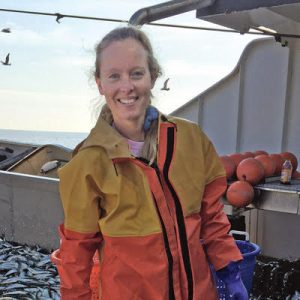
Witness Drives Home Marine Vessel Safety Concerns as Offshore Wind Growth Questioned
“Radar interference is a major safety problem for our vessels,” said Megan Lapp, the fisheries liaison for a Rhode Island-based seafood company who has spent close to a decade studying the impact of offshore wind farms on the commercial fishing industry. “Marine navigation without reliable radar is a life-threatening situation.” Lapp’s comments came during the first congressional hearing on the industrialization of the ocean earlier this month. She was one of six witnesses to testify before House of Representatives members Jeff Van Drew and Chris Smith of New Jersey, Andy Harris of Maryland and Scott Perry of Pennsylvania on March 16 in Wildwood. >click to read< 09:01
Atlantic Herring: Council Discusses Amendment 8 ABC control Rules; Passes on Picking“Preferred Alternative”
 The New England Fishery Management Council yesterday discussed the list of potential acceptable biological catch (ABC) control rules outlined in Draft Amendment 8 to the Atlantic Herring Fishery Management Plan. The document contains nine new control rule alternatives plus the standard “no action.” After considerable debate and a review of the varying impacts of each option, the Council declined to pick a “preferred alternative.” Instead, the Council intends to wait to hear the full range of public comments during future public hearings before indicating any preferences. ABC control rules define how catch or fishing mortality changes with stock size. Click here to read the story 16:51
The New England Fishery Management Council yesterday discussed the list of potential acceptable biological catch (ABC) control rules outlined in Draft Amendment 8 to the Atlantic Herring Fishery Management Plan. The document contains nine new control rule alternatives plus the standard “no action.” After considerable debate and a review of the varying impacts of each option, the Council declined to pick a “preferred alternative.” Instead, the Council intends to wait to hear the full range of public comments during future public hearings before indicating any preferences. ABC control rules define how catch or fishing mortality changes with stock size. Click here to read the story 16:51
Trade groups want 10-year requirement removed from Magnuson-Stevens Act
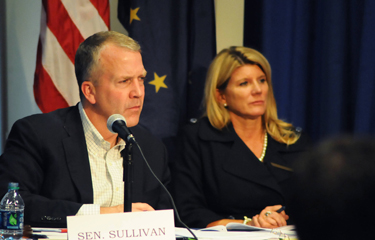 As Congress gets ready to address reauthorizing the Magnuson-Stevens Act, representatives from commercial fishing interests are urging lawmakers to revisit some of the current law’s regulations they feel have hindered the industry. In particular, they’re urging officials to do away with language that caps rebuilding plans for overfished species to 10 years. It’s an arbitrary figure that has too rigidly applied across all federally managed species, said Lori Steele, the executive director of the West Coast Seafood Processors Association, at a hearing Tuesday of the Senate Committee on Commerce, Science and Transportation’s Subcommittee on Oceans, Atmosphere, Fisheries and Coast Guard. click here to read the story 10:50
As Congress gets ready to address reauthorizing the Magnuson-Stevens Act, representatives from commercial fishing interests are urging lawmakers to revisit some of the current law’s regulations they feel have hindered the industry. In particular, they’re urging officials to do away with language that caps rebuilding plans for overfished species to 10 years. It’s an arbitrary figure that has too rigidly applied across all federally managed species, said Lori Steele, the executive director of the West Coast Seafood Processors Association, at a hearing Tuesday of the Senate Committee on Commerce, Science and Transportation’s Subcommittee on Oceans, Atmosphere, Fisheries and Coast Guard. click here to read the story 10:50
The Magnuson Stevens Act and its Ten Year Rebuilding Timeline: Science or Fiction? By Meghan Lapp – click here to read the article








